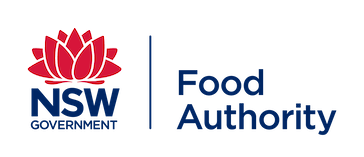kJ labelling nutrition information
Providing information to tackle overweight, obesity
Legislation to require certain retail food outlets to display nutrition information on menus at point-of-sale passed NSW Parliament on 23 November 2010.
The initiative:
- provides information to consumers for a category of foods which is not covered by labelling requirements for packaged products
- is part of the NSW Government’s broad set of responses to help tackle high rates of overweight and obesity in the community.
Development & consultation
In its submission in early 2010 to the national Review of Food Labelling Law and Policy (the Blewett Review), the NSW Government advocated requiring large fast food chains to publish point of sale information on the total energy (kilojoules or kJ), saturated fats, trans fats and salt content of their products.
In August 2010 the Government hosted a fast food forum where it consulted with the quick service restaurant (QSR) industry, public health professionals and consumer stakeholders about how best to provide consumers with information to help them make informed choices about the food they eat.
Following the forum, the Government asked the Food Authority to form the QSR Labelling Reference Group (disbanded following passage of the Fast Choices legislation). The group’s brief was to advise on:
- a model for providing point-of-sale nutrition information, for trial
- consumer education initiatives and research to support QSR menu labelling
- actions and lessons from product reformulation that could inform future initiatives in this area.
The group met in September 2010 and took its work forward.
The NSW Government announced on 7 November 2010 it would introduce legislation mandating the disclosure of nutrition information at standard menu restaurants in NSW.
The Better Regulation Statement (BRS) considered 3 options to regulate against better regulation principles.
The NSW Food Authority consulted with sectors of industry affected by the new rules directly and formed a new industry Fast Choices Labelling Reference Group. The Reference Group provided a consultative and advisory role while the Food Authority conducted a variety of tasks in the implementation, consumer education, review and evaluation phases of the Fast Choices initiative.
Scope
The rules contained in the Food Act 2003, and Food Regulation 2015 establish a level playing field by applying to ‘standard food items’ across traditional fast food chains as well as café and coffee chains, bakery chains, snack food chains, juice bars, ice-cream chains, salad chains and supermarket chains.
Standard food outlets are included if they sell standard items at:
- 20 or more locations in NSW, or
- 50 or more locations in Australia.
Legislation was passed on 23 November 2010.
The requirements came into effect on 1 February 2011 with a 12-month period for quick service businesses to comply before penalties came into force on 1 February 2012.
Since 1 February 2013 supermarkets also have to display nutrition information.
Review
The legislation mandated a review of the laws after their implementation to determine whether:
- the policy objectives remained valid
- whether the legislation remained appropriate
- whether or not the requirements should be extended to include additional nutrition information.
The Review report (pdf) was tabled in each House of Parliament in November 2012.
Evaluation
The NSW Ministry of Health and Food Authority jointly evaluated the menu labelling initiative to assess its impacts:
